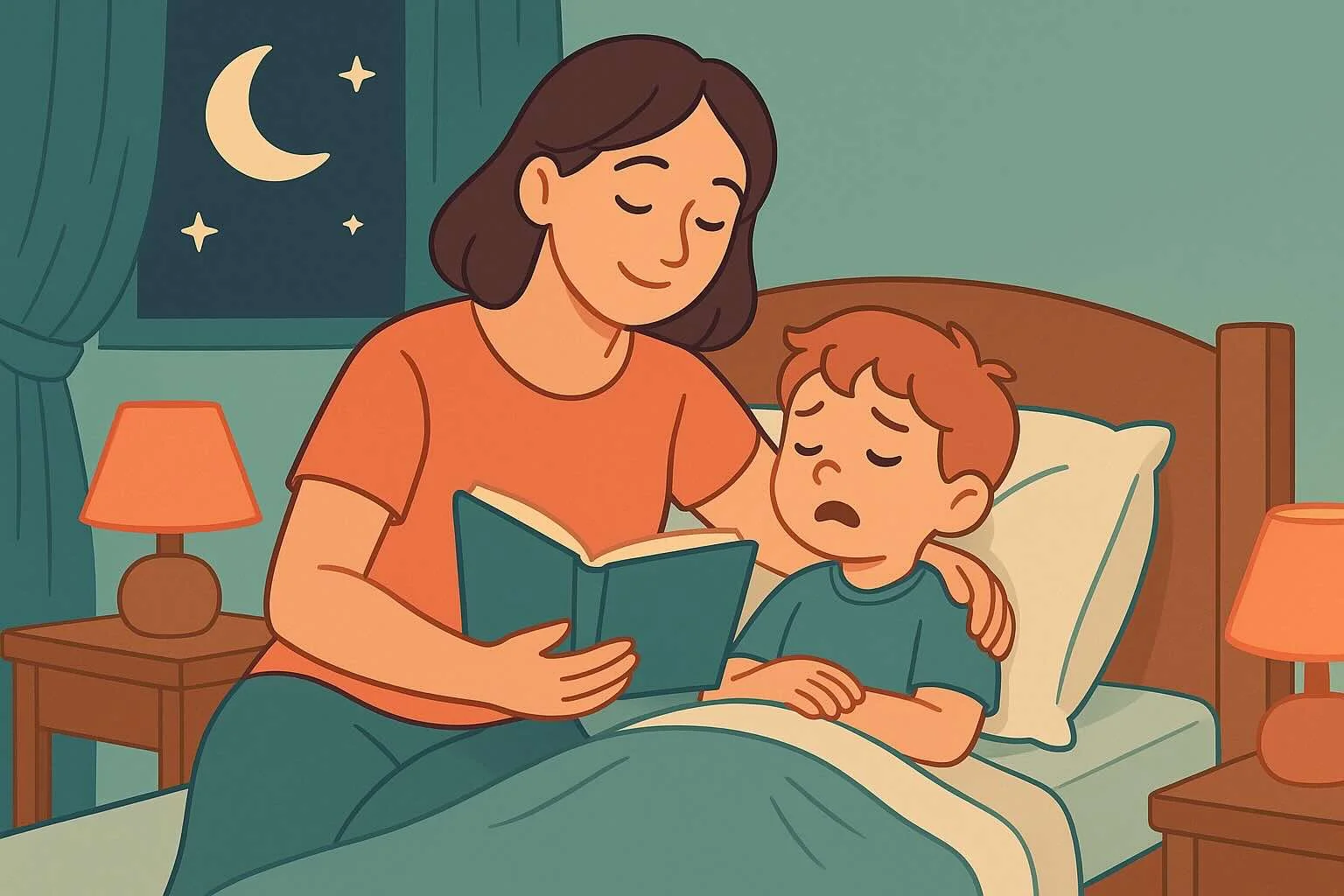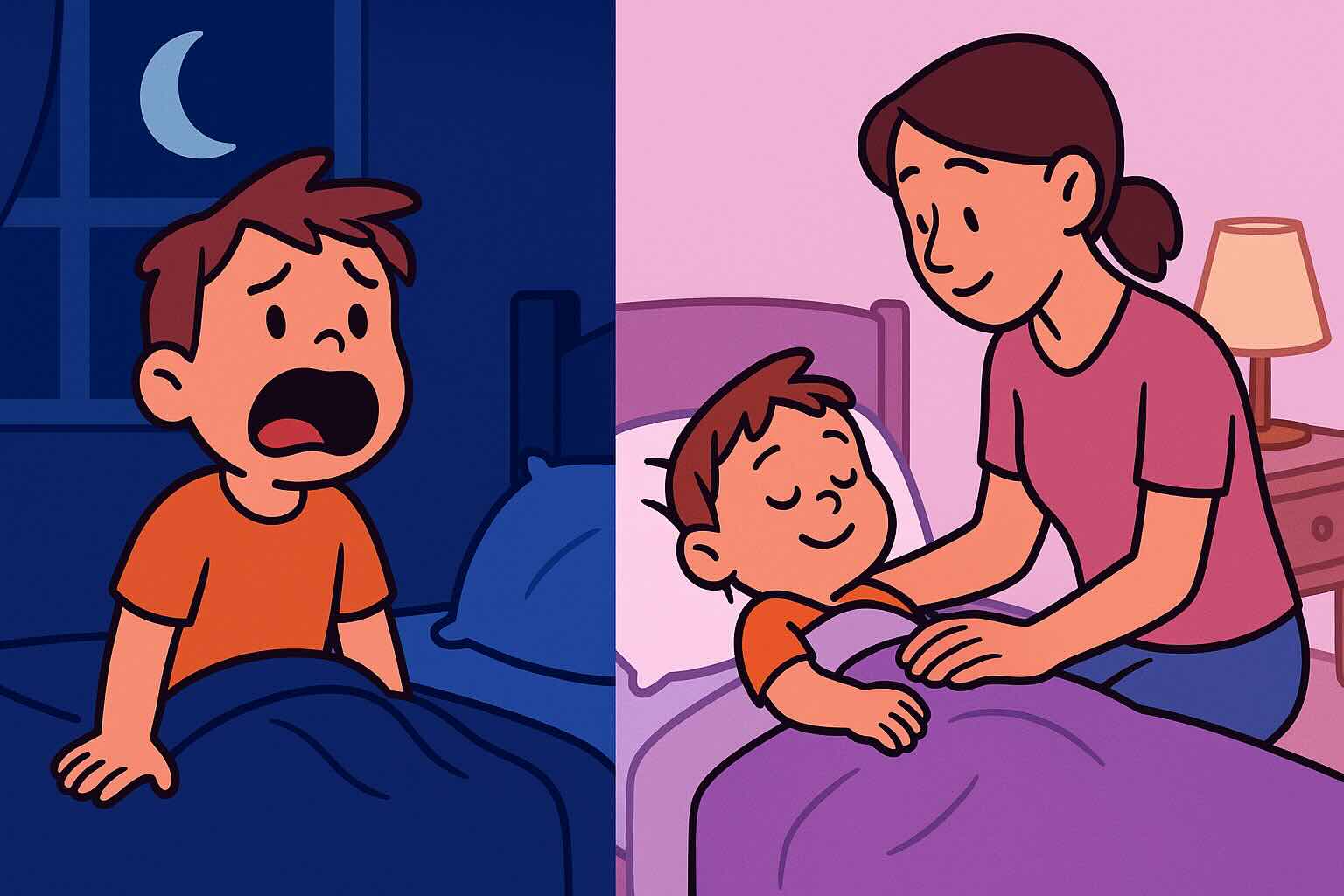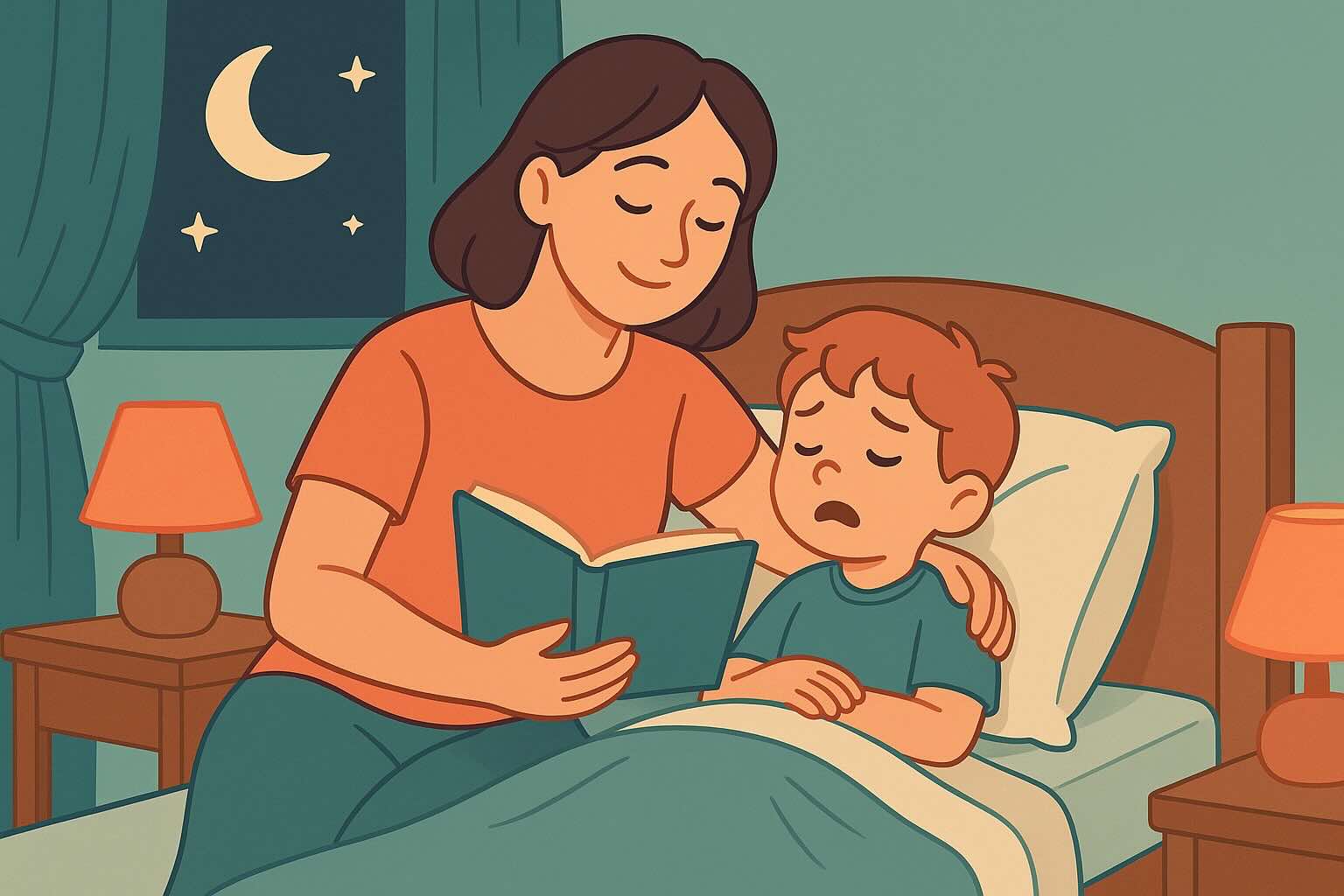4 Year Old Bedtime Routine: Complete Guide for Independent Sleep

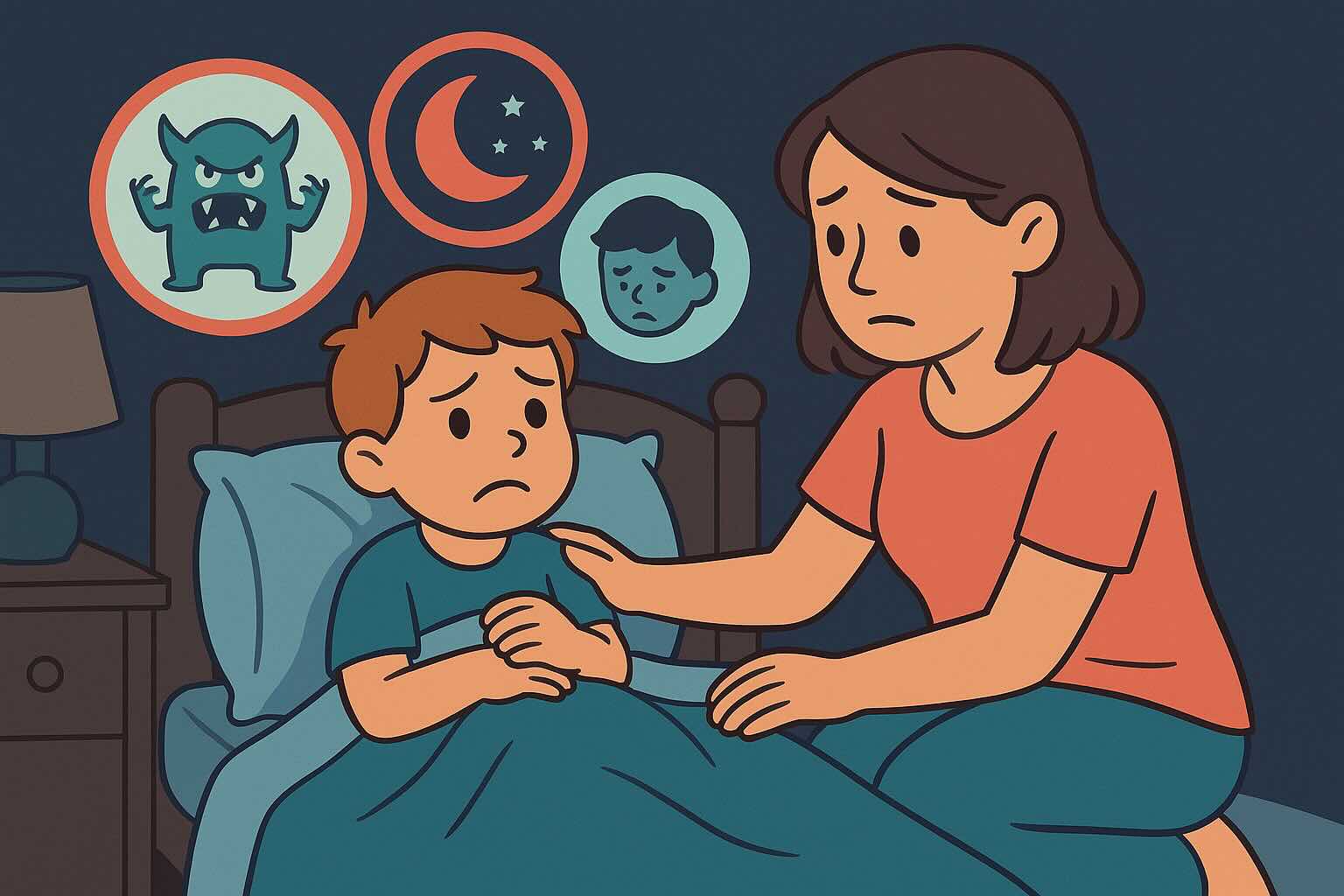
If bedtime with your 4-year-old feels like entering a negotiation with a tiny lawyer who never runs out of creative arguments for staying up "just five more minutes," you're experiencing one of the most challenging yet fascinating phases of childhood sleep development.
Four-year-olds are remarkable little humans—they've developed sophisticated language skills, logical thinking abilities, and an impressive capacity for creative problem-solving. Unfortunately for parents, they often deploy these impressive skills most vigorously at bedtime.
Research shows that 89% of parents report increased bedtime negotiations with 4-year-olds compared to younger ages, but here's the encouraging news: this same developmental growth that creates bedtime challenges also gives you powerful tools for creating cooperation and independence.
This comprehensive guide will help you navigate your 4-year-old's growing independence while establishing a peaceful, predictable bedtime routine using our proven 3-step sleep method, specifically adapted for the unique developmental needs of 4-year-olds.
Understanding 4-Year-Old Bedtime: Watch This First
This video will give you key insights into your 4-year-old's sleep needs and practical strategies for creating peaceful bedtime routines. The visual examples will help you understand the concepts we'll dive deeper into in this article.
Understanding Your 4-Year-Old's Sleep Development
Sleep Needs for 4-Year-Olds
Four-year-olds need approximately 10-12 hours of sleep in a 24-hour period. Unlike younger children, many 4-year-olds are transitioning away from regular napping, which means:
- Nighttime sleep: 10-12 hours
- Daytime nap: 0-1 hours (if still napping)
- Total sleep: 10-12 hours per day
The key change at age 4 is that most children can sustain alertness for longer periods, making them capable of staying awake from morning until bedtime without a nap.
Developmental Milestones Affecting Sleep
Understanding what's happening in your 4-year-old's rapidly developing brain helps you respond appropriately to bedtime challenges:
Advanced Language Skills: Your 4-year-old can now express complex thoughts and feelings, leading to sophisticated stalling tactics and genuine conversations about fears or concerns.
Logical Thinking: They're beginning to understand cause and effect, which means they can anticipate bedtime and may try to negotiate or find loopholes in routines.
Increased Independence: Four-year-olds want to do things themselves and make choices, which can extend bedtime routines but also offers opportunities for cooperation.
Social Awareness: They're more aware of what others are doing and may experience FOMO (fear of missing out) when it's time for bed.
Emotional Complexity: While emotional regulation is improving, 4-year-olds still experience big feelings about transitions and separation.
The 3-Step Sleep Method for 4-Year-Olds
Our evidence-based approach works particularly well with 4-year-olds because it provides the structure they need while honoring their growing independence and reasoning abilities.
Step 1: Create Your Story
Your bedtime "story" needs to be more detailed for 4-year-olds because they can understand and remember more complex plans. Include:
The Detailed Bedtime Sequence:
- 15-minute warning with specific activity wrap-up
- Transition to bedroom
- Bath or wash-up routine
- Independent dressing time
- Teeth brushing (increasingly independent)
- Story time (with choices)
- Brief connection time
- Lights out and quiet rest time
Your Response Plan for Common 4-Year-Old Scenarios:
- Negotiations about "just one more" anything
- Complex questions designed to delay bedtime
- Requests for elaborate goodnight routines
- Claims of not being tired
- Getting out of bed for various reasons
Sample Story for 4-Year-Old: "At 7:30 PM, I'll give a 15-minute warning. We'll go to the bedroom together, take a quick bath or wash face and hands, then they'll put on their chosen pajamas independently. After teeth brushing, we'll read two books they select from the bedtime book basket. I'll then spend 5 minutes talking about the day, give hugs and kisses, and turn off the lights. They'll rest quietly in bed. If they try to negotiate, I'll say 'You have an idea AND bedtime is now. Let's talk about your idea tomorrow.' If they get up, I'll walk them back saying 'Time for rest' without engaging in conversation."
Step 2: Share Your Story
Four-year-olds benefit from detailed explanations and involvement in planning. Share your bedtime routine when they're calm and receptive.
How to Share with a 4-Year-Old:
"I want to talk about our new bedtime routine that will help you get great sleep and wake up full of energy! Here's what we'll do together each night..."
Walk through each step, explaining the "why" behind each part:
- "We take a bath to wash away the day and help our bodies relax"
- "You'll choose your own pajamas because you're getting so independent"
- "We'll read together because story time is special time just for us"
- "After lights out, your job is to rest quietly so your body can grow and your brain can organize all the amazing things you learned today"
Get Their Input: Ask questions like:
- "Which two books would you like in your bedtime book basket?"
- "Would you prefer to brush teeth before or after putting on pajamas?"
- "What would help you feel cozy and safe in your room?"
Address Their Concerns: Listen to their worries and validate them: "You're concerned about being alone in your room. Your stuffed animals will be with you, and I'll be nearby if you truly need me."
Step 3: Follow Through
Consistency is crucial, but with 4-year-olds, you can be more collaborative in your approach while still maintaining boundaries.
Follow-Through Strategies for 4-Year-Olds:
For Negotiations:
- Acknowledge their point: "You have an interesting idea"
- Maintain the boundary: "AND bedtime is now"
- Offer future consideration: "Let's talk about that tomorrow"
For Elaborate Requests:
- Show appreciation: "You're so creative!"
- Stay focused: "Right now it's time for our bedtime routine"
- Redirect energy: "Tomorrow you can tell me more about that idea"
For "I'm Not Tired":
- Validate their feeling: "You don't feel tired right now"
- Explain the purpose: "Your body needs rest time even when your mind feels awake"
- Give them a job: "Your job is to rest quietly in bed"
Remember that 4-year-olds may test boundaries more creatively than younger children, but they also respond well to explanations and consistency.
Age-Specific Bedtime Routine for 4-Year-Olds
Here's a detailed routine that honors your 4-year-old's developmental needs:
7:30 PM - Transition Warning (5 minutes)
"In 15 minutes, we'll start our bedtime routine. Please finish your current activity."
Give them time to wrap up naturally rather than abrupt transitions. Four-year-olds appreciate knowing what's coming next.
7:45 PM - Move to Bedroom Together (2 minutes)
Walk to the bedroom together, making it a positive transition:
- "Let's go to your cozy room!"
- Let them turn on the bedroom light
- Have them get their chosen pajamas ready
7:47 PM - Bath or Wash-Up (10 minutes)
For 4-year-olds who are increasingly independent:
- Let them run their own bath water (with supervision)
- Provide washcloths and soap for independent washing
- Keep it brief and focused
- If not bathing, have them wash face and hands thoroughly
7:57 PM - Getting Dressed (5-10 minutes)
Support their growing independence:
- They choose from 2-3 pajama options
- Encourage complete independence but offer help if requested
- Let them take their time within reason
- Praise their efforts: "You got dressed all by yourself!"
8:05 PM - Teeth Brushing (5 minutes)
Build dental hygiene independence:
- They apply toothpaste and brush first
- You do a "final check" brush
- Let them rinse and put away toothbrush
- Make it fun with a brushing song or counting
8:10 PM - Story Time (15 minutes)
This is prime connection time:
- Let them choose 2 books from a pre-selected bedtime basket
- Read in their bedroom to build sleep associations
- Encourage them to "read" familiar books to you
- Use storytelling voices and engage their imagination
- Keep lighting dim but adequate for reading
8:25 PM - Connection Time (5 minutes)
Brief but meaningful connection:
- Share three things you loved about the day together
- Let them share their favorite part of the day
- Express your love: "I'm so glad you're my child"
- Give hugs and kisses
- Remind them of tomorrow's fun plans
8:30 PM - Quiet Rest Time
- Turn off main lights (nightlight okay)
- Tuck them in comfortably
- Say your consistent goodnight phrase
- Leave the room confidently
- Begin your response plan if they get up
Common 4-Year-Old Bedtime Challenges and Solutions
Challenge 1: Master Negotiators
Why It Happens: Four-year-olds have developed impressive reasoning skills and love to use them, especially when trying to extend bedtime.
Common Negotiations:
- "But can we read just one more really short book?"
- "What if I promise to go to sleep super fast after one more story?"
- "I just remembered something very important I need to tell you!"
Solution: Use the "Acknowledge and Redirect" technique:
- "You really want more story time! AND we've had our two books for tonight. Tomorrow we'll read more wonderful stories."
- Stay warm but firm
- Don't get pulled into logical debates
- Offer something to look forward to: "Tomorrow you can tell me that important thing first thing in the morning!"
Challenge 2: Fear of Missing Out
Why It Happens: Four-year-olds are more aware of ongoing activities and may worry they're missing something fun.
Signs of FOMO:
- "What are you going to do after I go to bed?"
- "I want to stay up like the big kids"
- Getting upset about ending fun activities
Solution:
- Acknowledge their feelings: "You don't want the fun to end"
- Explain sleep benefits: "Sleep helps you have energy for tomorrow's adventures"
- Create anticipation: "When you wake up, we'll have breakfast together and plan our day"
- Maintain consistency regardless of their disappointment
Challenge 3: Increasing Independence vs. Needing Comfort
Why It Happens: Four-year-olds want to be independent but still need security and comfort, creating internal conflict.
How It Shows Up:
- Wanting to do everything themselves but then asking for help
- Claiming they don't need bedtime routine but then getting upset without it
- Wanting parents to leave but then calling them back
Solution:
- Offer structured independence: "You can put on your pajamas all by yourself, and then I'll read stories with you"
- Provide comfort within boundaries: "I'll sit with you for 5 minutes, then it's time for independent rest"
- Build confidence gradually: "You're getting so good at bedtime routine!"
Challenge 4: Elaborate Stalling Tactics
Why It Happens: Four-year-olds are creative and persistent, leading to increasingly sophisticated delay techniques.
Creative Stalling Examples:
- Suddenly needing to use the bathroom multiple times
- Discovering urgent questions about life, death, or dinosaurs
- Needing to arrange stuffed animals in very specific ways
- Claiming they heard a scary noise that needs investigation
Solution:
- Build genuine needs into the routine (bathroom visit, comfort items)
- For additional requests, use brief acknowledgment: "That sounds important AND bedtime is now. Let's talk about it tomorrow."
- Stay calm and boring during stalling attempts
- Use consistent phrases: "Time for rest" or "Bedtime is now"
Creating the Optimal Sleep Environment for 4-Year-Olds
Four-year-olds can be more involved in creating their sleep space, which increases their investment in bedtime success.
Room Setup Collaboration
Let your 4-year-old help make decisions about:
- Which stuffed animals stay in bed
- Where to place a small nightlight
- Which books go in the bedtime book basket
- How to arrange their pillow and blankets
Temperature and Comfort
- Maintain room temperature between 68-70°F (20-21°C)
- Let them choose their favorite blanket
- Ensure comfortable pajamas that they like
- Use breathable bedding appropriate for the season
Managing Light
- Use blackout curtains for better sleep
- Provide a small nightlight if they request it
- Avoid screens for at least 1 hour before bedtime
- Consider a sunrise alarm clock for natural wake-up cues
Sound Management
- Use consistent white noise if helpful
- Keep household noise minimal during bedtime routine
- Some 4-year-olds enjoy soft, slow music for the first few minutes
Sample Scripts for 4-Year-Old Bedtime Scenarios
Having prepared responses helps you stay calm and consistent during challenging moments.
When They Want to Negotiate Story Time
Child: "Can we please read just one more short book? I promise I'll go right to sleep after!"
Instead of: Getting into a debate about what constitutes "short" or whether they'll really go to sleep
Try: "You love our story time so much! We read our two special books tonight AND now it's time for rest. Tomorrow we'll have more wonderful story time together."
When They Claim They're Not Tired
Child: "I'm not even tired! I don't need to sleep!"
Instead of: "Yes, you are tired" or "Look how you're yawning"
Try: "You don't feel tired right now AND your body needs rest time to grow and help you have energy for tomorrow's adventures. Your job is to rest quietly in bed."
When They Have "Important" Questions
Child: "Mom, I just need to ask you something really important about why the sky is blue!"
Instead of: Getting drawn into the conversation or dismissing their curiosity
Try: "That sounds like a really interesting question! I can see you're curious about important things. Let's talk about the sky tomorrow, and right now it's time for rest."
When They Want to Change the Routine
Child: "Can we brush teeth after stories tonight instead of before?"
Instead of: "No, we always do it this way" or making the change impulsively
Try: "You have an idea about changing our routine! Our routine helps our bodies know it's sleep time AND we'll keep it the same tonight. We can talk about routine changes tomorrow."
Handling the Nap Transition
Many 4-year-olds are naturally transitioning away from daily naps. Here's how to manage this change:
Signs Your 4-Year-Old Is Ready to Drop Naps:
- Takes 30+ minutes to fall asleep for naps
- Naps interfere with nighttime sleep
- Can stay alert and pleasant until bedtime without napping
- Shows no signs of afternoon tiredness
Signs They Still Need Occasional Naps:
- Gets cranky or hyperactive in late afternoon
- Falls asleep easily when offered rest time
- Has very active days or growth spurts
- Still falls asleep in the car during afternoon drives
Transition Strategy: Quiet Time
Replace naps with "quiet time":
- Same timing as former nap (usually 1:00-2:30 PM)
- Child stays in room with quiet activities (books, puzzles, soft music)
- No pressure to sleep, but if they fall asleep naturally, that's fine
- Limit to 45-60 minutes to protect nighttime sleep
Building Independence While Maintaining Connection
Four-year-olds thrive when they feel both independent and connected. Here's how to balance both needs:
Encouraging Independence:
- Let them choose pajamas from 2-3 options
- Have them put toothpaste on their own toothbrush
- Encourage them to climb into bed themselves
- Let them arrange their comfort items how they like
- Give them ownership: "You're so good at bedtime routine!"
Maintaining Connection:
- Make eye contact during conversations
- Listen to their thoughts and feelings about the day
- Share what you love about them
- Create special rituals that are just yours (special handshake, song, phrase)
- Be fully present during story time
Gradual Parent Withdrawal:
If your goal is for your 4-year-old to fall asleep independently, make changes gradually:
Week 1: Sit on their bed for 5 minutes after routine Week 2: Sit in chair next to bed for 5 minutes Week 3: Sit in chair across the room for 3 minutes Week 4: Stand in doorway for 2 minutes Week 5: Say goodnight and leave
Let them know the plan: "This week I'll sit in this chair for 5 minutes, then you'll have independent rest time."
Troubleshooting Common Issues
When Bedtime Routine Takes Too Long
Problem: Routine stretches to 60+ minutes due to dawdling or negotiations
Solutions:
- Use visual timers for each activity
- Build natural endings into activities: "You can arrange your stuffed animals until this song ends"
- Give them control over pace within time limits
- Praise efficiency: "You got ready so quickly tonight!"
When They Keep Getting Out of Bed
Problem: Multiple trips out of bedroom after lights out
Solutions:
- Address genuine needs during routine (water, bathroom)
- Use "boring returns": walk them back without conversation
- Stay consistent—most children stop testing after 5-7 nights
- Consider if they need a few minutes of quiet activity before expecting sleep
When Bedtime Fears Emerge
Problem: New fears about darkness, monsters, or being alone
Solutions:
- Validate feelings: "You feel scared AND you're safe in your room"
- Use comfort objects and nightlights
- Address fears during daytime with books and discussions
- Create fun rituals like "monster spray" or "brave bear" protectors
- Stay calm and matter-of-fact about fears
When Changes Disrupt the Routine
Problem: Illness, travel, or schedule changes throw off bedtime
Solutions:
- Maintain core elements even if timing changes
- Return to normal routine as soon as possible
- Explain temporary changes: "Tonight bedtime is different because we're at Grandma's house. Tomorrow we'll be back to our regular routine."
- Be extra patient during readjustment periods
Advanced Strategies for Strong-Willed 4-Year-Olds
Some 4-year-olds are particularly persistent and strong-willed. Here are additional strategies:
Give Them Meaningful Choices
- "Would you like to walk to your room or hop like a bunny?"
- "Do you want to brush teeth first or put on pajamas first?"
- "Which two books should we put in tomorrow's bedtime basket?"
Use Natural Consequences
- "When you take a long time getting dressed, we have less time for stories"
- "When you stay in bed peacefully, you wake up rested and ready for fun"
Channel Their Leadership
- "You're the bedtime routine expert! Can you show me how to brush teeth properly?"
- "You're such a good big kid. Can you help me remember what comes next in our routine?"
Acknowledge Their Big Feelings
- "You have big disappointed feelings about bedtime ending. It's hard when fun things end."
- "You wish you could stay up all night like grown-ups. Sometimes I wish that too!"
Building Toward Long-Term Sleep Success
The habits you establish now with your 4-year-old create the foundation for years of healthy sleep. Focus on these key principles:
Consistency Over Perfection
- Aim for the same routine 80% of the time
- Maintain core elements even during busy periods
- Return to routine quickly after disruptions
- Celebrate progress, not perfection
Growing Independence
- Gradually increase their responsibility in the routine
- Move from doing things for them to supervising them doing things themselves
- Build their confidence: "You're getting so good at taking care of yourself!"
Positive Sleep Associations
- Keep bedtime pleasant and connecting
- Focus on what they DID well: "You put on your pajamas so independently!"
- Make their bedroom a place they enjoy being
- Maintain your calm, loving presence even during challenging moments
Related Resources for Continued Success
For additional support with your 4-year-old's sleep and development, explore these related guides:
- 3 Year Old Bedtime Routine Guide - Foundational sleep strategies for younger preschoolers
- Bedtime Battles Guide - Comprehensive strategies for ending bedtime struggles
- Nighttime Fears Complete Guide - Addressing bedtime anxiety and fears
- Healthy Sleep Habits Guide - Building foundation sleep patterns
- Preschool Outbursts Guide - Managing big emotions during transitions
- Setting Boundaries Without Punishment - Positive discipline approaches
- Managing Power Struggles - Cooperative approaches to common conflicts
- Connection Before Correction Guide - Building cooperation through relationship
Remember that your 4-year-old's increasing negotiation skills and independence-seeking are actually signs of healthy development. While they can make bedtime more complex, these same skills will serve them well as they grow.
The key is maintaining your loving authority while honoring their growing autonomy. With patience, consistency, and the strategies in this guide, you can create bedtime routines that work for both you and your 4-year-old.
Your investment in peaceful bedtime routines now pays dividends in your child's sleep health, emotional regulation, and your family's overall well-being. Trust the process, celebrate the small victories, and remember that even the most persistent 4-year-old negotiator will eventually learn that bedtime boundaries are safe, loving, and non-negotiable.
24/7 AI Parenting Assistant
Get instant, personalized advice with expert-curated parenting knowledge. Chat with your AI coach anytime, anywhere.
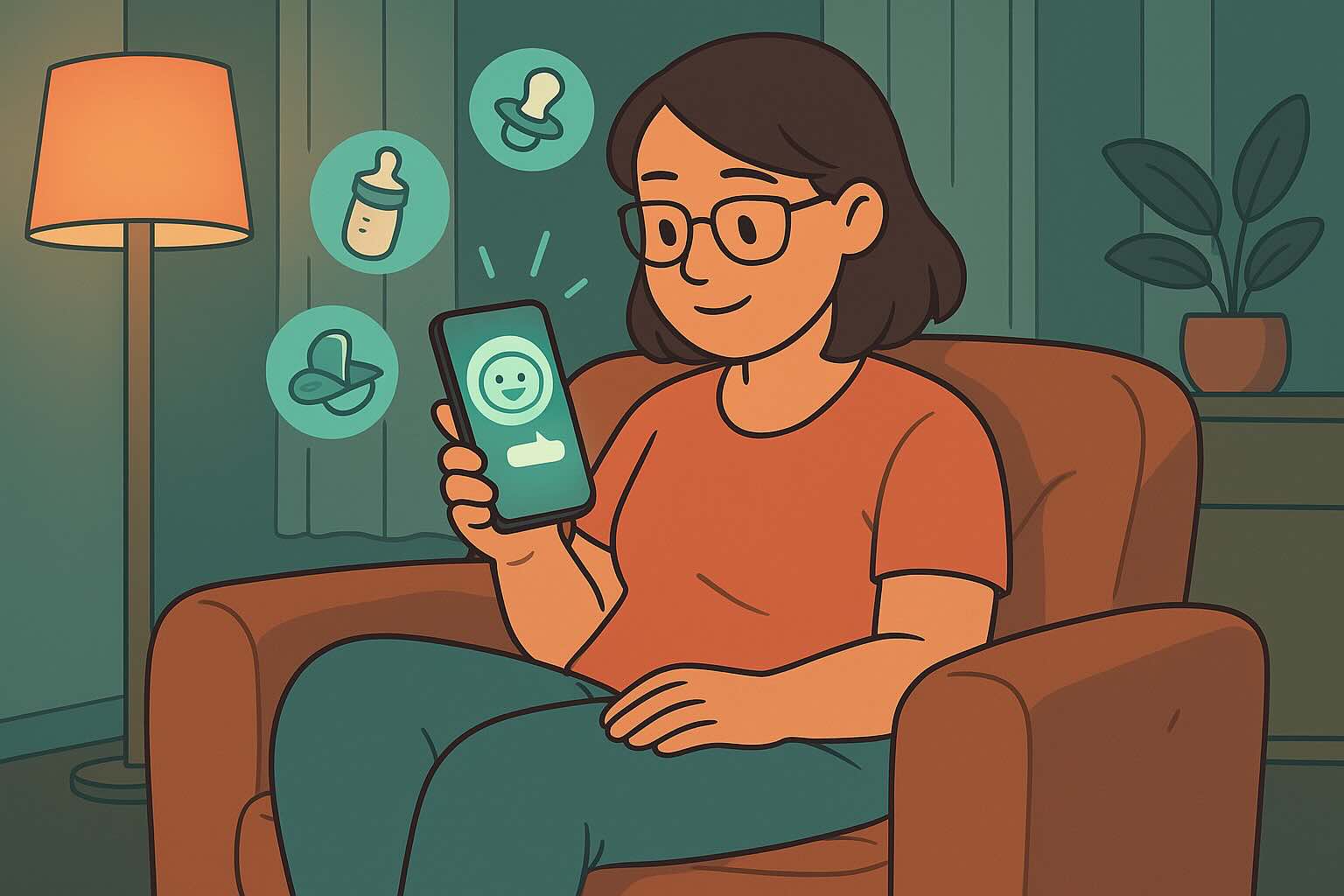
Expert Content Library
Access multimedia resources, articles, and expert-reviewed content organized by topics and your child's age.
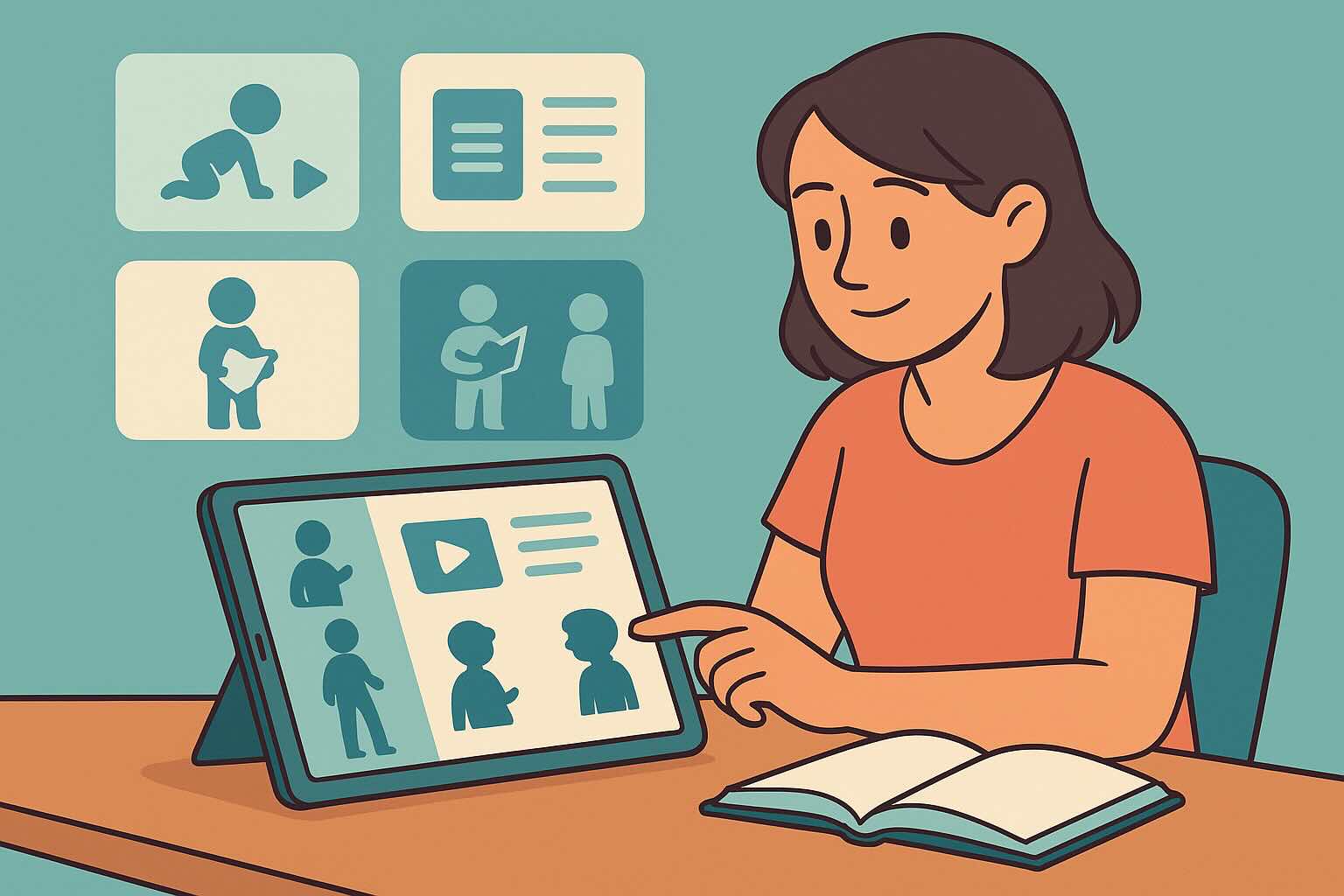
Get Your Free Sleep Training Toolkit
5-day email course + printable sleep log to help your baby sleep through the night
Frequently Asked Questions
Need personalized support?
RootWise's AI coach can provide tailored strategies for your specific situation, available 24/7 when you need it most.
Learn More About AI Coaching →